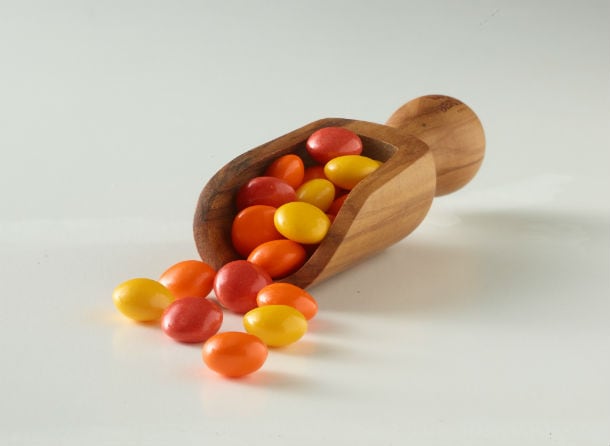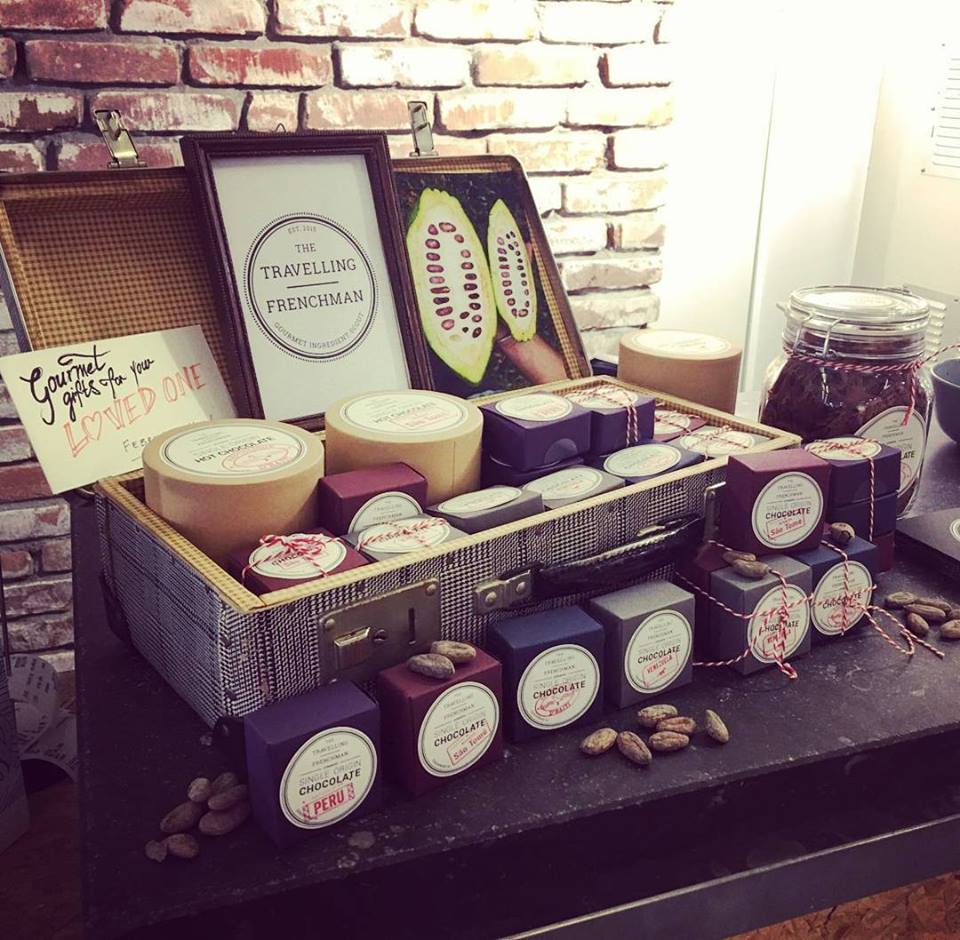Exclusive interview with Christiane Lippert, head of marketing (Food), Lycored
Confectionery News: Explain the growing concerns about artificial colors
Christiane Lippert: Recent years have seen huge growth in demand for natural colors in food products generally. This has largely been driven by concerns about health, particularly that of children. Some artificial colors have been linked with health scares – in 2016 for example, the ‘Seeing Red’ report from the Center for Science in the Public Interest raised public awareness of issues with artificial reds.[1] And while consumers may not be fully aware of the details of the scientific studies, they have certainly got the message that artificial colors are associated with health risks.
The arguments for switching from artificial to natural colors are obvious in most food sectors. But how strong is demand for naturality in candy markets, where the opinion of kids matters, and health is perhaps less likely to be a driver of product choice? At Lycored, we set out to understand the way kids and their parents respond to natural and artificial colors in candy ― and the impact this has on liking and purchasing decisions.
About Lycored
Lycored is the global leader in natural carotenoids for food, beverage and dietary supplement products. Established in 1995, it develops and supplies ingredients in four main market areas: colorings, taste & texture enhancers, active health & wellness, and nutritional premixes.
Meanwhile, there is a historical perception that natural colors may be harder to work with. In many cases this is true: some naturally derived colorants are sensitive to pH, UV light and extreme temperatures. In addition to our consumer research, we carried out separate stability trials testing the performance of our colorants in Vitamin-C enriched gummies, and in hard-coated candies.
CN: Natural v artificial colors in candy – what do kids and their parents think?
CL: Our expert researchers conducted real-time, face-to-face, 30-minute interviews with 10 US children (aged between 5 and 13, with an even gender mix) and their parents.
All were regular purchasers and consumers of gummy candy and / or fortified vitamin gummies. Each parent-child pair was sent an unbranded bag of gummies colored naturally with Lycored’s carotenoid-derived colors. They were also given another bag of gummies made by the same manufacturer but colored artificially. The gummies with Lycored’s colors were fortified with Vitamin C, which subjected them to extra stress. The interview participants were asked to visually examine the two bags of candy and answer questions about them.
CN: For kids, candy is candy, right?
CL: All the participants were able to distinguish between the naturally colored candies and the artificial ones (although in some cases this required careful scrutiny). The children tended to prefer the brighter, artificial colors to the more muted natural ones. However, crucially, they were excited about all of them. When asked if they would be willing to eat the naturally colored gummy candy, they answered yes with enthusiasm: one typical response was: “Of course, it’s candy! They are both candy ― I would eat both of them!” In other words, for kids candy is candy, and natural colors definitely do not appear to be a “deal-breaker”.

CN: What’s the Parents’ take on all of this?
CL: Although the parents interviewed did not actively seek out candy with natural ingredients, most were aware that artificial coloring is not a healthy option for their children. They said the Lycored-colored candy appeared to contain less sugar and assumed it would be lower in other unattractive ingredients, such as high-fructose corn syrup. Meanwhile, they expected the artificially colored candy to contain more additives, more chemicals, and more artificial sweeteners, as well as more sugar. Even some of the children surmised that the brighter colored gummies would contain more artificial food coloring.
Most of the parents said they viewed candy as a treat and made allowances for sugar content and artificial features. However, most also said they read nutrition labels on confectionery products. Primary items of interest or concern were sugar content, serving size, artificial dyes, high-fructose corn syrup (which was called out by many without prompting), artificial sweeteners ending with “ol” such as xylitol and sorbitol, calories and carbohydrates. Some recounted negative effects of artificial colors on children’s health, and one mother attributed childhood obesity to unnatural additives in candy.
As well as concerns about known “baddies”, there was a desire to avoid unrecognizable or unpronounceable ingredients. When asked what would deter them from buying a product, one said “whether there is tonnes of artificial coloring garbage”. Others mentioned “a long list of things I don’t recognize…” and “really long words that I don’t know what it is!”
CN: When all factors are equal, what are the main preferences from consumers, according to your research?
CL: Our research revealed that taste is king, with flavor expectations the most important driver of liking and re-purchase. There was also a strong association with the color of the product and perceptions about the strength of flavor.
However, it is worth noting that most participants did not understand that the coloring of the candies was not the source of their flavor. When all other factors were equal, and they knew they would not have to sacrifice taste, the parents voiced a clear preference for natural colors, saying they would prefer to feed their kids healthy options. One said: “I would prefer to go the natural ingredient way, my only concern would be how it would taste.”
Once they understood that the taste would be the same – and their children would eat them – the parents said they would buy candy colored naturally. As one put it: “I would probably choose [the naturally colored candy] especially if the tastes are similar. I would rather have the natural than the artificial with the red dyes and different things like that.” Even some of the children said they might opt for the natural options. “It looks like there’s more dye in it”, one said of the artificially colored product. “That might also not be a good thing, so I might choose [the naturally colored candy].”
Furthermore, some of the parents said they would be willing to pay a little more for naturally colored products, as long as the taste was not compromised. Comments included “If I can find a natural one that has less extra stuff in it that they’ll still eat, then I’ll buy that, even if it’s extra [additional cost].”
CN: But how do natural colors cope with the rigors of confectionery production?
CL: We first set out to test the performance of our carotenoid-derived colors in vitamin-enriched gummies. Researchers carried out accelerated and real time shelf life stability tests on gummies colored with six different Lycored shades, comparing them with samples produced by the same manufacturer but colored artificially. The Lycored-colored gummies contained Vitamin C, but the artificially colored alternatives did not.
The natural colors from Lycored all remained true to fruit in their natural color hues. Their stability was strong under intense light conditions and similar to that of the synthetic colors. This was the case despite the additional stress of Vitamin C content, which disrupts the stability of some colorants.
We then investigated the performance of our colors during the rigorous hard-coating / panning process in hard-coated confectionery. They were tested in two different coatings for candy ― Quick White from Norevo and Titanium Dioxide. The formulations, in shades of red, yellow and orange, were tested for four weeks at temperatures of 20OC, 25 OC, 30 OC, and 35 OC in clear plastic bags and in a humidity-controlled environment. Lycored’s colors all performed very well, achieving good quality shades in both coatings. In fact, the coating experts noted their user-friendliness compared to other color sources.
CN: What are the main conclusions from your research?
CL: Confectionery is different from most other categories. Parents view it as a treat and health concerns are rarely the most important driver of purchase choice. Nevertheless, as our consumer research shows, when taste is removed from the equation, naturality and clean label become more important.
There are therefore clear benefits for confectionery manufacturers who use natural colorants and, as our new stability trials show, no downside in terms of performance. However, consumers need more assurance that natural coloring will not diminish flavor. Packaging cues could help bolster confidence in the flavor appeal of naturally colored products.
[1] Center for Science in the Public Interest, ‘Seeing Red: Time for Action on Food Dyes (2016) https://cspinet.org/resource/seeing-red-time-action-food-dyes



